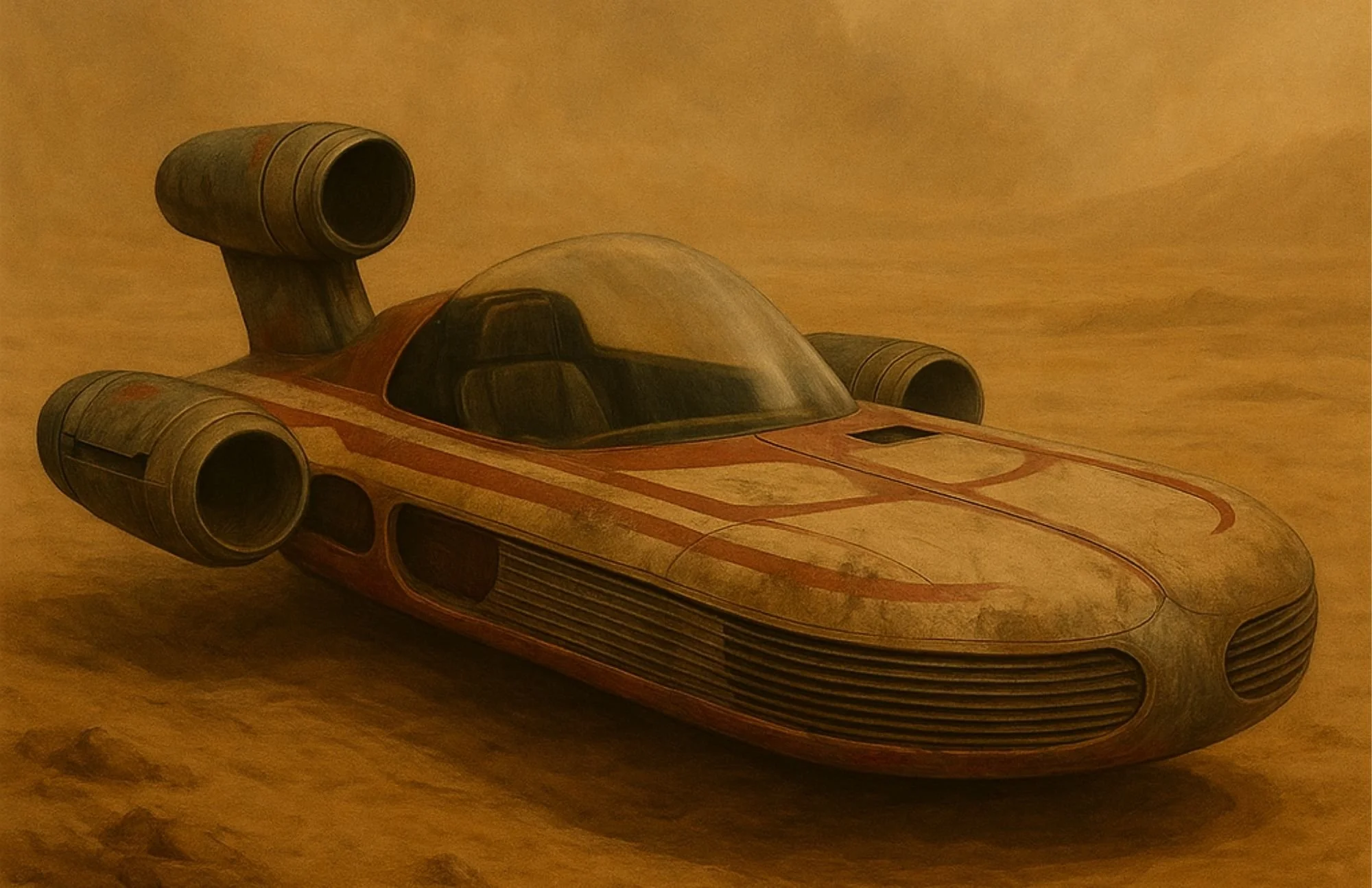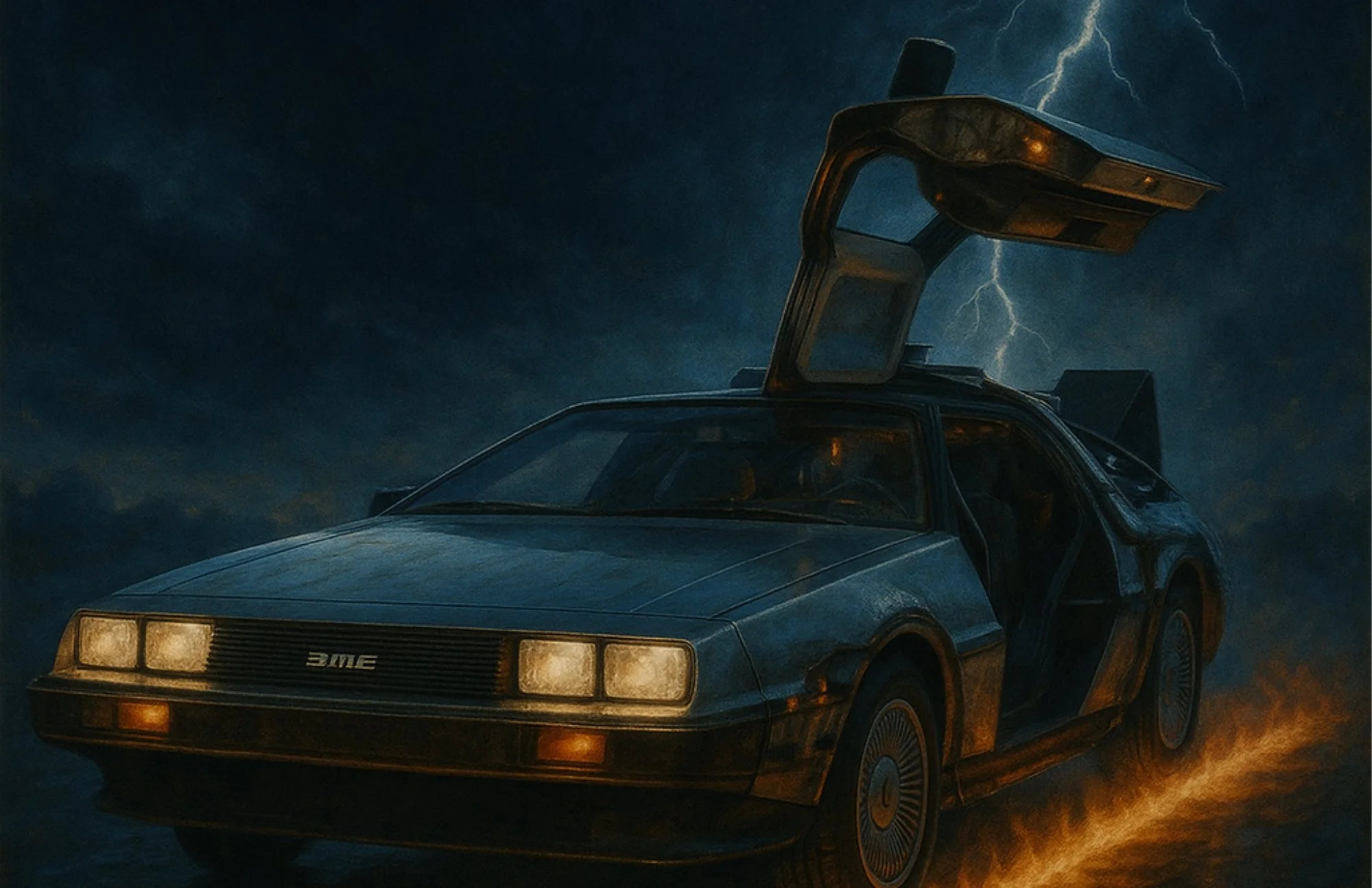Driven by Design Guide (coming soon)
-

Ghostbusters Ecto-1
Behind the Scenes: “Who ya gonna call?” Ecto-1 began life as a real 1959 Cadillac Miller-Meteor ambulance/hearse, which the filmmakers transformed into the Ghostbusters’ iconic ride. At nearly 20 feet long and 3 tons in weight, it was unwieldy to drive. Imagine taking those tight turns in what is essentially a small bus! Dan Aykroyd and Harold Ramis originally envisioned the car being black with purple strobe lights and supernatural abilities (able to dematerialize and travel between dimensions), giving it a spooky aura. They ultimately changed it to the now-familiar white paint scheme – a practical decision because many scenes were filmed at night, and a black car wouldn’t show up well on camera.
Amazingly, wildlife played a role, too! The vehicle's iconic siren sound was created by sound designer Richard Beggs - he edited a real leopard's snarl!
STEAM Behind Ecto 1 – Art, Nature and Engineering: Ecto-1 provides a lesson in automotive technology and design. Being a 1950s car, it had features like an air suspension system that made the ride smooth despite its bulk. Air suspension works using compressed air in place of steel springs to level out heavy loads, a concept in mechanical engineering. The car’s big V8 engine (6.3 L, ~320 hp) was needed to move a 3-ton vehicle around the set.
The Ecto-1’s flashy roof equipment and gadgets did not actually function, but each was crafted to suggest scientific devices: radar, sensors and storage for ghost traps – an exercise in creative design. The Ecto-1 celebrates the “A” in STEAM too: the art of prop design, where artists and engineers collaborated to retrofit a real car with imaginative tech. This is where form meets function: how do you modify a car to handle extra weight (the props) and electrical load (all the lights/sirens)? Ecto-1 demonstrates problem-solving in both real-life car restoration as well as the exploration of “fictional” tech.
-

Star Wars Landspeeder
Behind the Scenes: Luke Skywalker’s Landspeeder in Star Wars: A New Hope (1977) wasn’t really levitating – it was a clever illusion. The prop speeder was built on the chassis of a small three-wheeled car (a Bond Bug), which could drive in the desert. To make it appear to hover, the film crew mounted angled mirrors along the sides of the speeder to reflect the ground and hide the wheels. In wide shots, they even smeared Vaseline on the camera lens near the bottom to blur the area where wheels might be seen. This low-tech trick fooled our eyes, making the Landspeeder look like it was floating above the sands of Tatooine – an ingenious example of practical effects before CGI.
STEAM Behind the Landspeeder – Science Meets Technology: The Landspeeder prompts a discussion about hover technology. In the film it’s “anti-gravity,” but in real life, hovercrafts use air cushions or magnetic levitation (maglev) the way trains float above tracks using electromagnetic forces. What would it take to make a real Landspeeder? For instance, hovering vehicles would need to overcome gravity – using thrust or magnetic repulsion – whereas Luke’s Landspeeder was actually using optical technology to simulate anti-gravity. This is where science fact and movie magic differ, and how early filmmakers were like engineers solving problems, using mirrors and camera tricks as technology, to create convincing illusions.
A real-world hovercraft (air cushion vehicle) is the most practical method for a direct physical recreation of a Landspeeder's movement. A hovercraft operates on the principle of reducing friction by floating on a cushion of pressurized air. However, for a vehicle that achieves actual flight without direct reliance on the ground surface, eVTOL technology is the available, albeit complex and expensive, solution. The fictional Landspeeder’s "repulsorlift" technology that pushes against gravity itself remains science fiction.
-

Batmobile Tumbler
Behind the Scenes: Christopher Nolan’s team designed the Tumbler, largely in secret in his garage, as a fully functional vehicle from scratch – not just a fiberglass prop. Powered by a 5.7-liter V8 engine (~400 horsepower), it could accelerate 0–60 mph in 5.6 seconds and reached about 100 mph. In fact, it was so fast for a movie car that it outran the camera trucks during filming. Weighing 7,000 pounds with huge off-road tires, the Tumbler could even jump 30 feet and land intact, performing its own stunts on set!
The original Batmobile for the 1966 TV series was built by custom car designer George Barris. He built it in 1965, basing it on a 1955 Lincoln Futura concept car, and it was completed in just three weeks.
STEAM behind the Batmobile – Engineering & Physics: The Tumbler Batmobile from The Dark Knight trilogy is grounded in real-world military engineering principles and the use of practical effects, unlike earlier, more fantastical Batmobiles. The Tumbler exemplifies extreme automotive engineering to perform its own stunts. Its design was described as a cross between a Lamborghini sports car and a military Humvee, giving it both speed and toughness. Engineers combined a racecar engine with a reinforced chassis and advanced suspension to absorb jumps and rough terrain.
How do you land a 3.5-ton car safely from a 30-foot jump? Simply put, ENGINEERING. A unique design feature is the absence of a front axle; the large front wheels were supported externally, a departure from conventional car engineering. The vehicle had reinforced suspension to withstand the impact of large jumps and rough terrain. This is the creative engineering that made comic-book technology such as stealth mode and jet propulsion, a reality on screen.
-

Jurassic Park Jeep
Guide coming soon.
-

Back to the Future DeLorean
Guide coming soon.
-

Top Gun Maverick Cockpit
Guide coming soon.
